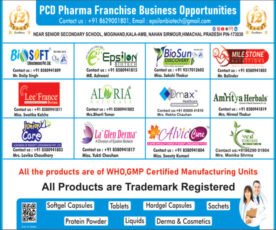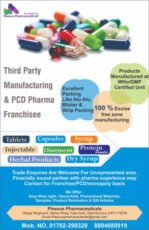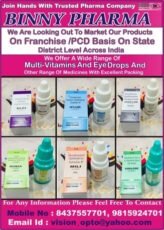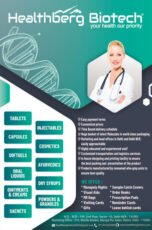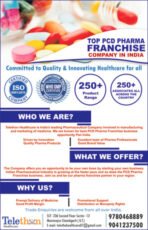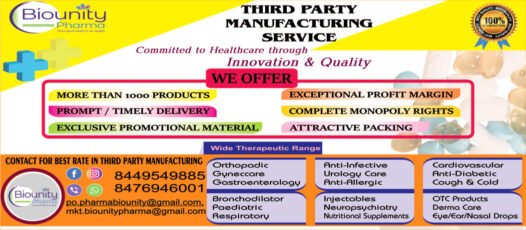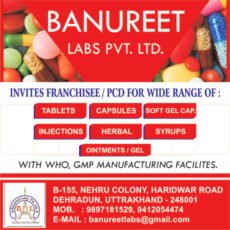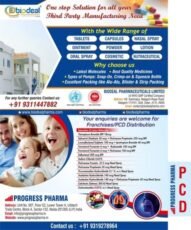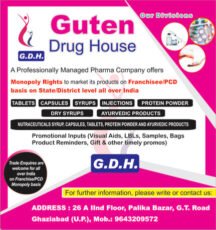Third progress report of the Global Action Plan for Healthy Lives and Well-being for All
Thursday May 19, 2022 at 4:31 pmAhead of the 75th World Health Assembly, all the 13 signatory agencies of the Global Action Plan for Healthy Lives and Well-being for All (SDG3 Global Action Plan) have released their joint third progress report, Stronger collaboration for an equitable and resilient recovery towards the health-related Sustainable Development Goals (SDG), incentivizing collaboration.
The report observed that more than two years into the Covid-19 pandemic, compounded by overlapping global crises, progress on the health-related Sustainable Development Goals (SDG) is going further off track. Countries have achieved only about one-fourth of what is needed to achieve the Sustainable Development Goals (SDG) health targets by 2030.
It also stressed the need for the SDG3 Global Action Plan, focusing on improving collaboration to help accelerate Sustainable Development Goals (SDG) implementation by countries. The report provides examples of how new, more joined-up ways of working impact public health and outlines ways to further improve this, for example, by creating more incentives for various agencies to work more closely together.
Over the past year, the current initiative has bolstered its structures for collaboration, with 52 countries (an increase of 15 countries within the last year) receiving joint support from these agencies. An SDG3 Global Action Plan “recovery strategy” and a joint letter from these heads of agencies to country teams, including United Nations (UN) Resident Coordinators, further set out a path to not only increase collaborative work by the agencies to more countries but to deepen collaboration in different countries to better support each country’s needs and to ensure that no one is left behind.
The SDG3 Global Action Plan aligns its work with global health initiatives to reduce fragmentation in the global health architecture. The Global Action Plan (GAP) aims to make it easier for countries to coordinate with agencies, increase efficiencies, and facilitate progress towards universal health coverage. For example, the SDG3 Global Action Plan has fully integrated H6/Every Woman, Every Child initiative. It works in countries such as the Republic of Congo to improve reproductive, maternal, neonatal, child, and adolescent health services through strengthened coordination of technical and financial partners.
“SDG3 Global Action Plan agencies have strengthened their collaboration on Primary Health Care and other areas in more than 50 countries. But truly transforming how we jointly support countries to recover to the SDGs will require stronger incentives for collaboration,” commented Dr. Tedros Adhanom Ghebreyesus. He is the World Health Organisation (WHO) Director-General and the Chair of the SDG3 Global Action Plan Principals Group.
Dr. Seth Berkley said: “We cannot have an equitable recovery from the pandemic if we leave the most vulnerable in our communities behind. That includes the zero-dose children who have not received a single vaccine shot. We need strong collaboration across agencies and with countries to reach zero dose children and expand access to families who are missing out on essential primary health care services.” He is the Chief Executive Officer (CEO) of Gavi, the Vaccine Alliance.
Juan Pablo Uribe added, “There can be no doubt: partnership and collaboration are a critical way forward to support country leadership in addressing the overlapping challenges and crises preventing millions of women, children, and adolescents from surviving and thriving.” He is the Director of the Global Financing Facility for Women, Children, and Adolescents.
Guy Ryder stated, “The Global Action Plan helped raise awareness about decent work deficits in the health sector and the need for sustainable investments in the health workforce, including in decent working conditions and equipment.” He is the Director-General of the International Labour Organization.
Peter Sands claimed: “We began 2022 facing unprecedented health challenges. Suppose we will achieve Sustainable Development Goal 3: health and well-being for all. In that case, we need to turbocharge our collaboration, funding, and commitment to fight today’s health crises and prepare for the health threats we know will come. The most effective way to do this is an integrated approach where we leverage each other’s strengths to maximize our resources and impact.” He is the Executive Director of The Global Fund.




